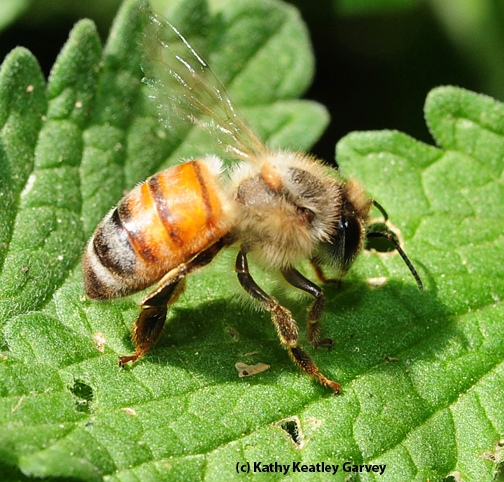
That's a question frequently asked of Extension apiculturist Eric Mussen of the UC Davis Department of Entomology and Nematology.
Fact is, he's an "unbee-lievable" wealth of information. The honey bee guru has served as Extension apiculturist since 1976 and writes a newsletter, from the UC apiaries and Bee Briefs, both posted on his website. When Mussen retires in June of 2014 (yes, the "R" word), he will be sorely missed.
One of the latest questions:
"A few weeks ago, the day before I left on a trip, I noticed decreased activity in my top bar hive. I looked in and saw very few bees, the queen and these dead pupae. There was no bad smell or bodies in or around the hive. When I returned and examined the hive yesterday, all the honey had been robbed (as I expected), there were only two dead bees on the floor and the remaining bee bread. I haven't looked into my three Langstroth hives yet, but the activity level looks normal. Do you have any ideas on what killed the colony, whether I need to take any special precautions regarding my other hives and whether I need to treat the top bar hive in someway before putting another colony in next spring?"
The concerned beekeeper attached a photo in his email.
Mussen responded: "No, I cannot tell you what killed the bees by looking at a photograph. But, there are clues. First, very few things happen in a colony that results in black bees. The most common cause is 'chilled brood.' That means that the brood was not incubated at the proper temperature and finally succumbed to cooler temperatures, turning black during the process. Depending upon when that happened, the pupae would be in various stages of completion to adult bees. The second set of possibilities revolves around infections with viruses. Although it is called "black queen cell virus," that virus can infect and discolor worker bees. A second RNA virus that leads to black bees is 'chronic bee paralysis.' In that case, though, it is adult bees that get 'black and greasy.' Actually, the bees have had their hairs scraped off by their nest mates. When truly bald, the exoskeleton is black and the cuticle is waxy (greasy). So, it sounds like your colony failed to thrive for some reason. The bees could no longer adequately feed or incubate the brood (lack of nurse bees?). Then, things just spiraled down. Robbing was included in the mix when the colony became weakened. Since I have no idea what put the colony out of business, I would start, again, next season using the same combs. Wait until it is warm and a good pollen flow is going on."
Failure to thrive? How many times have we heard that? It applies to bees, too.
Attached Images:
